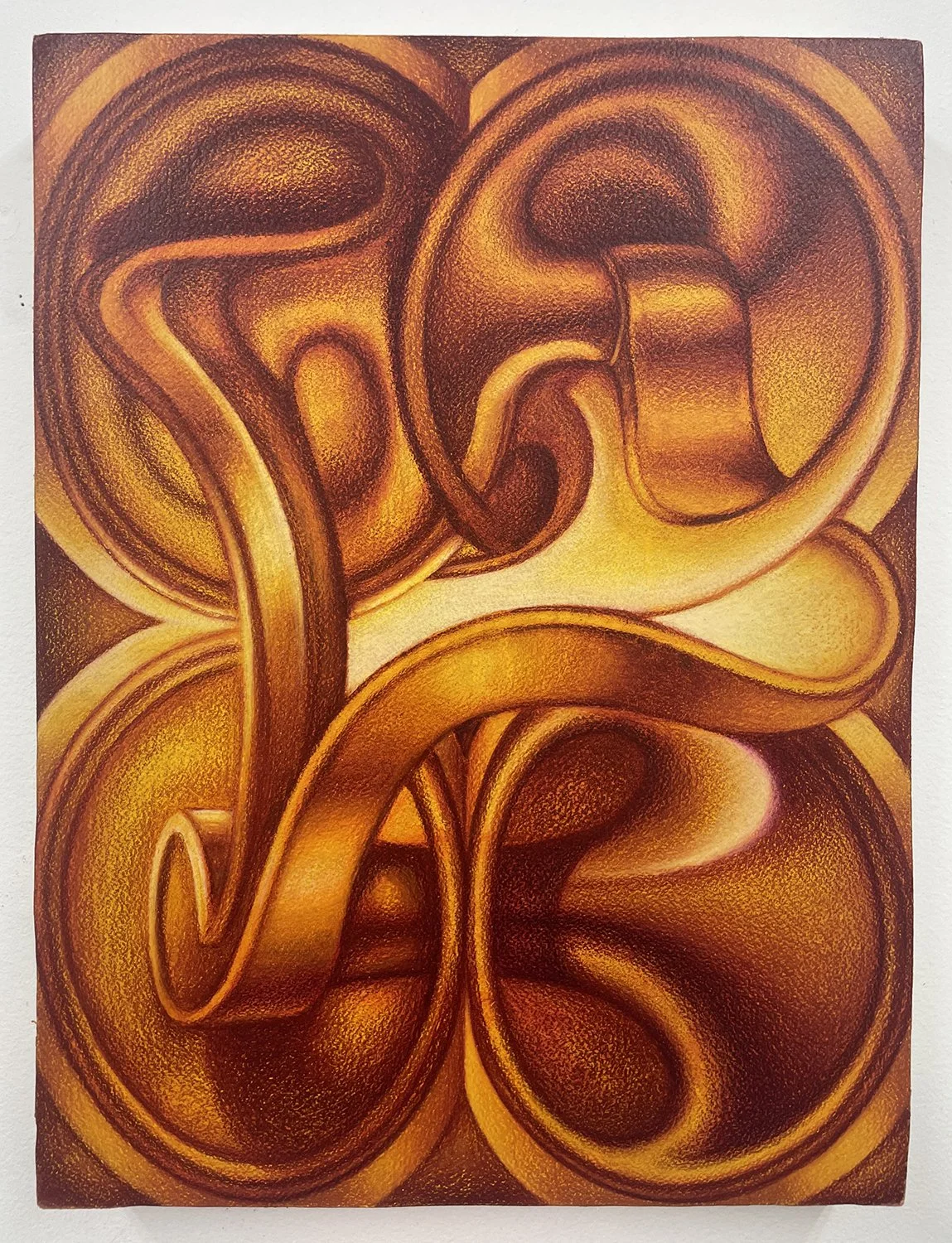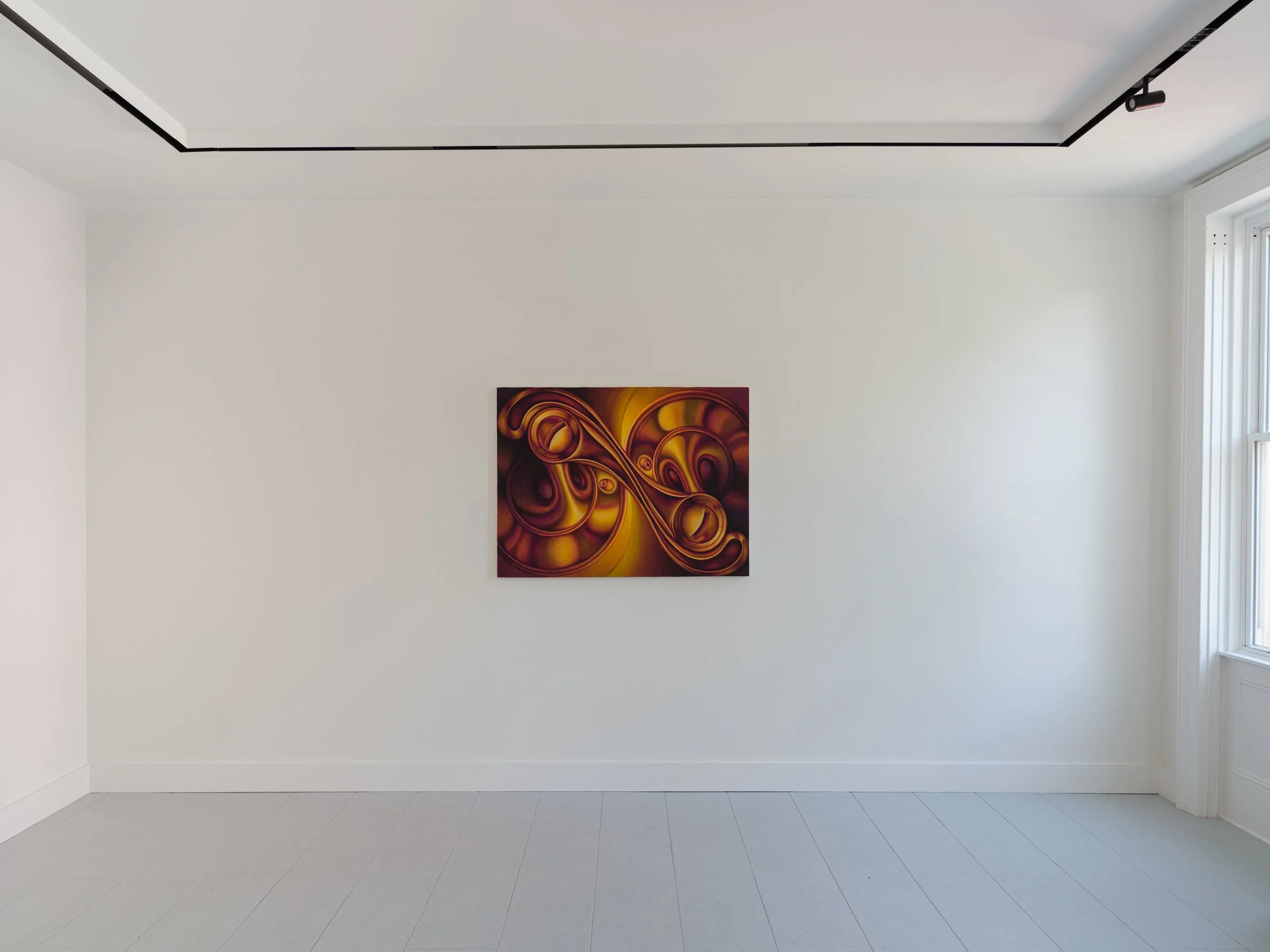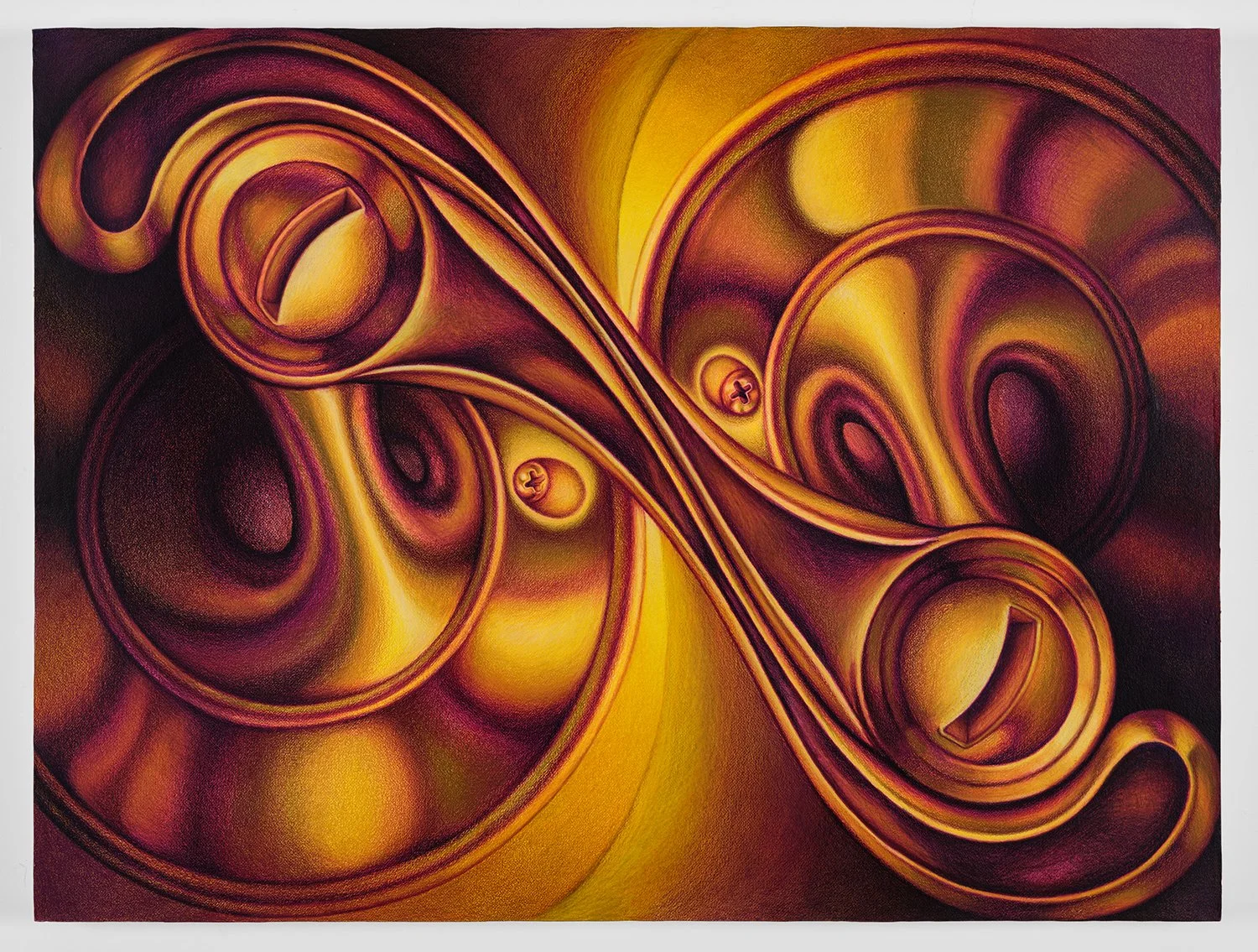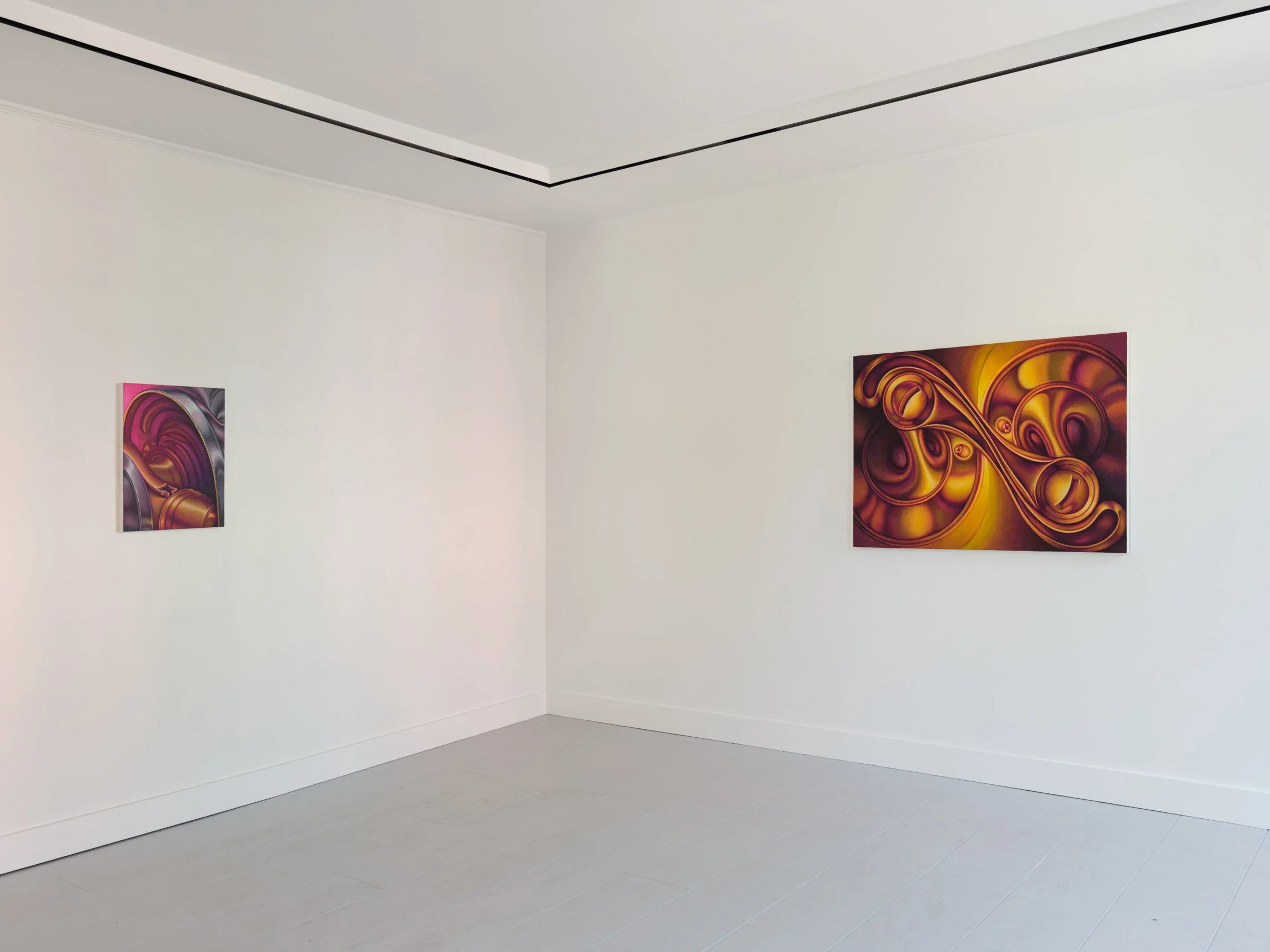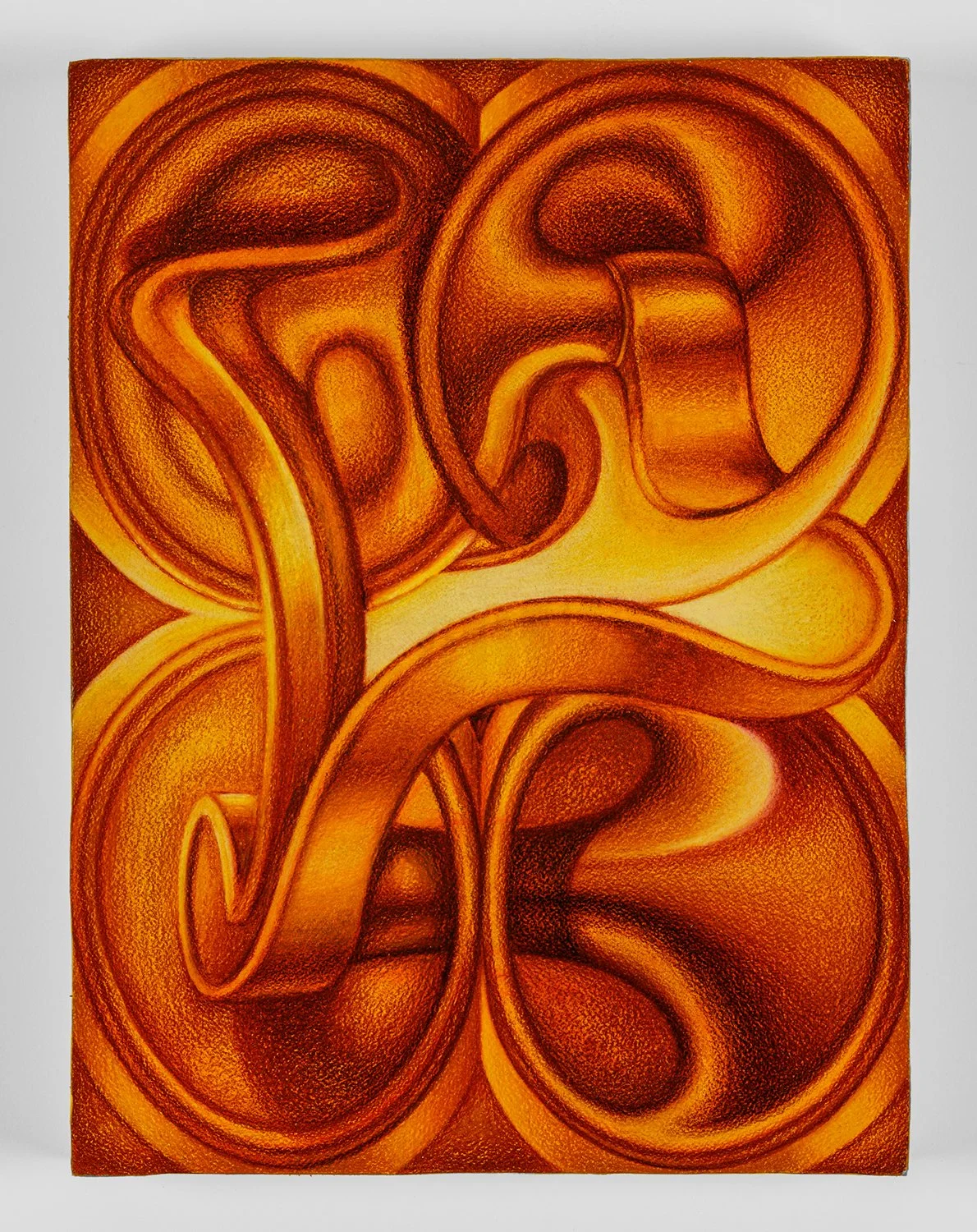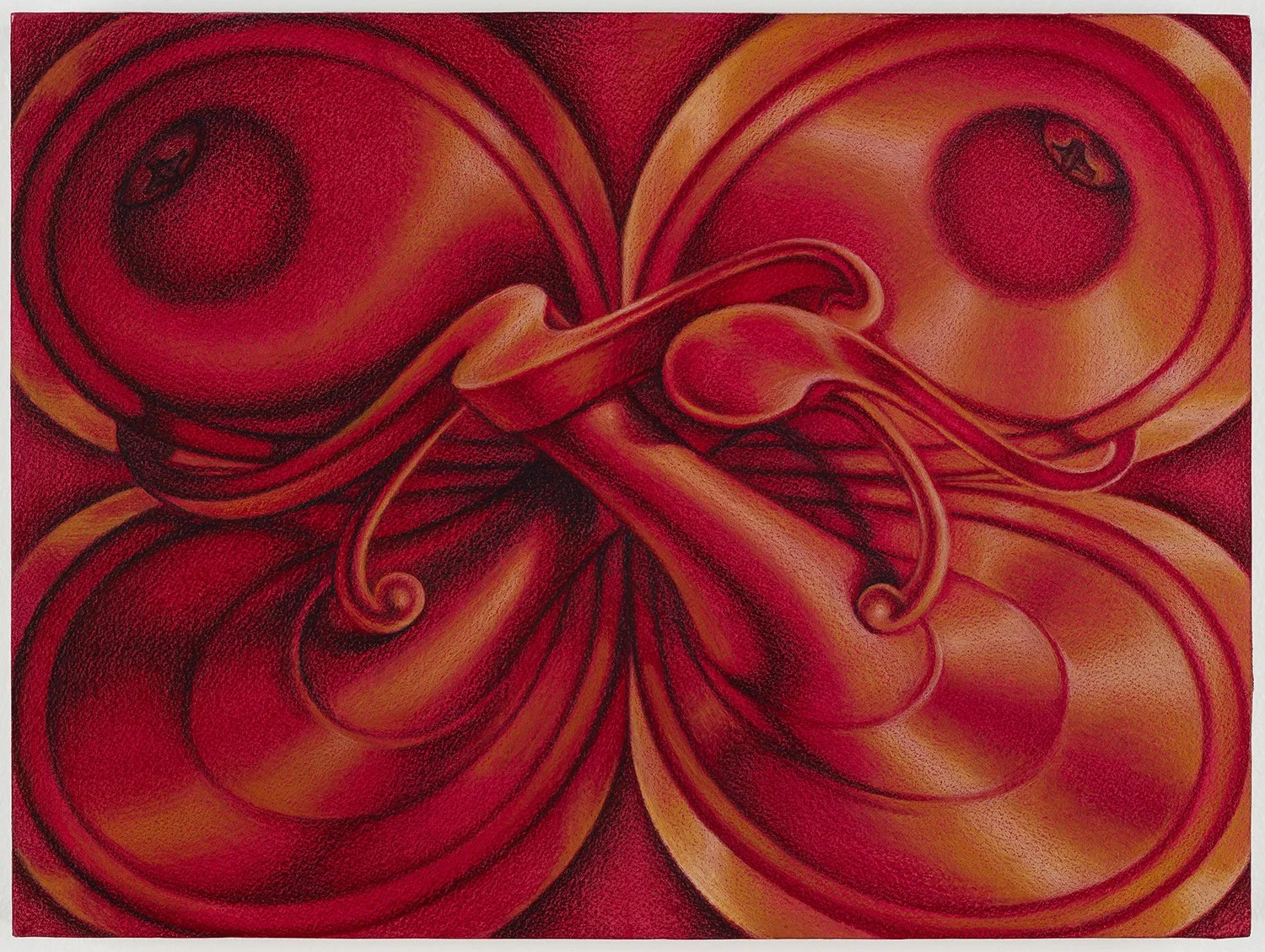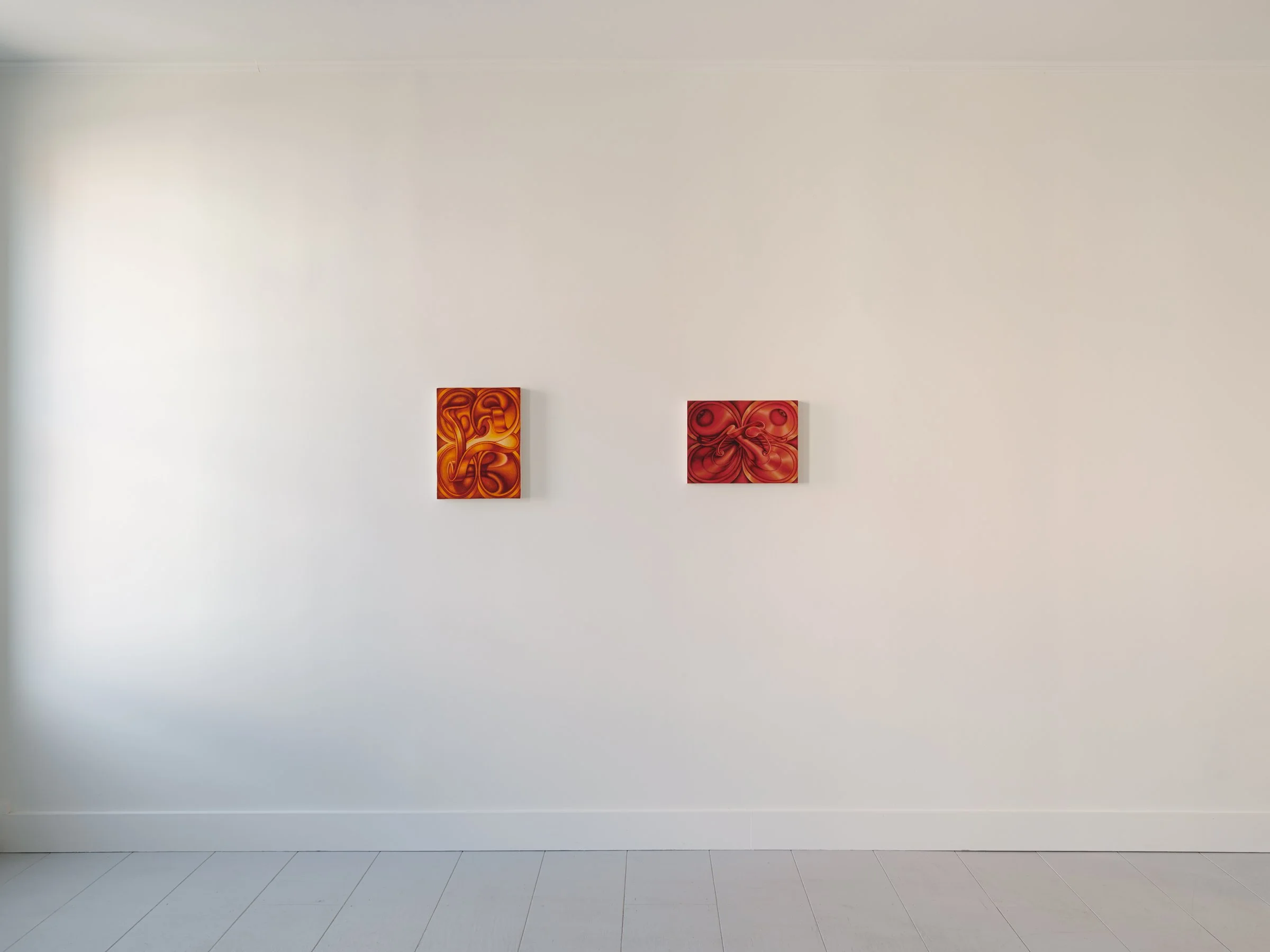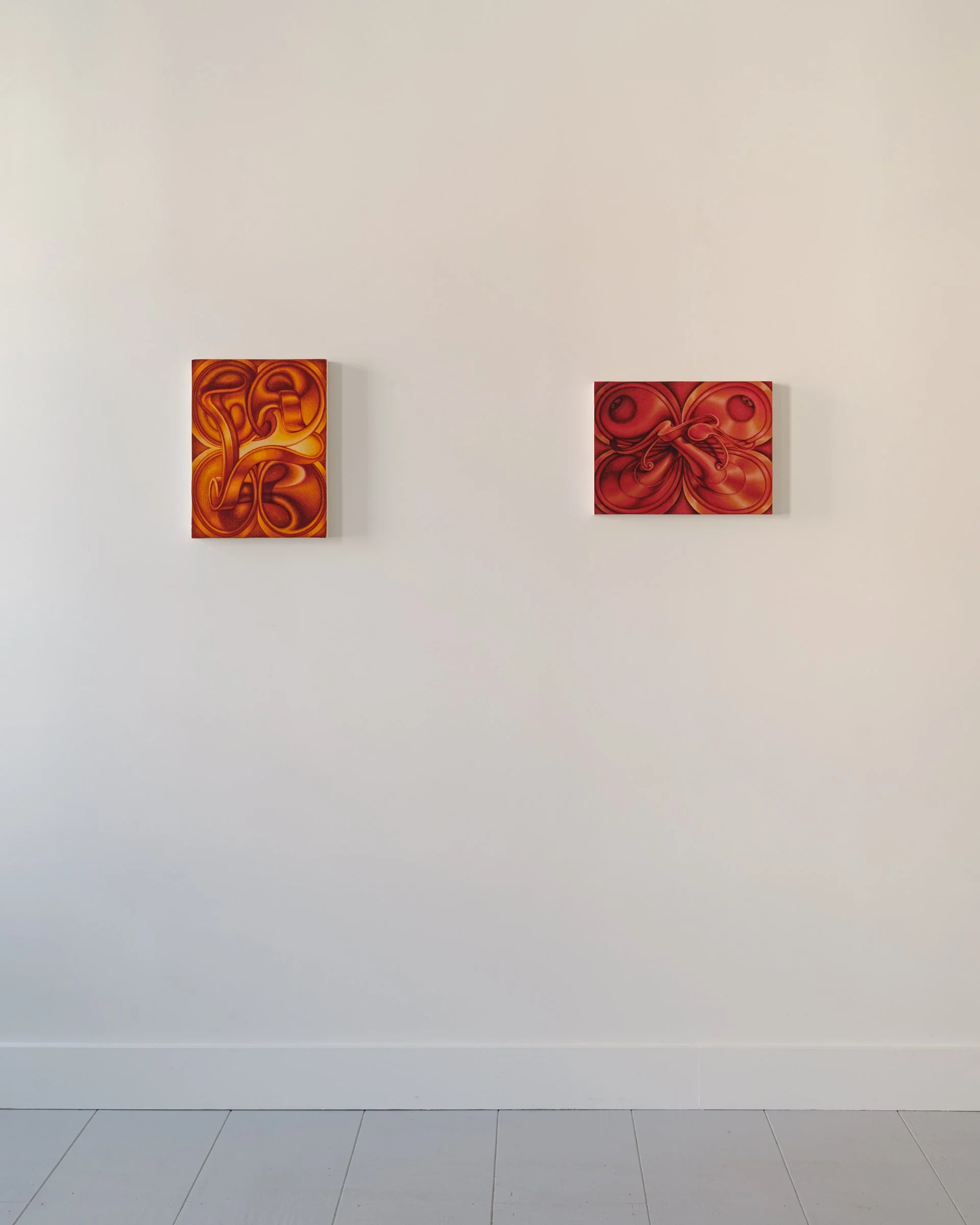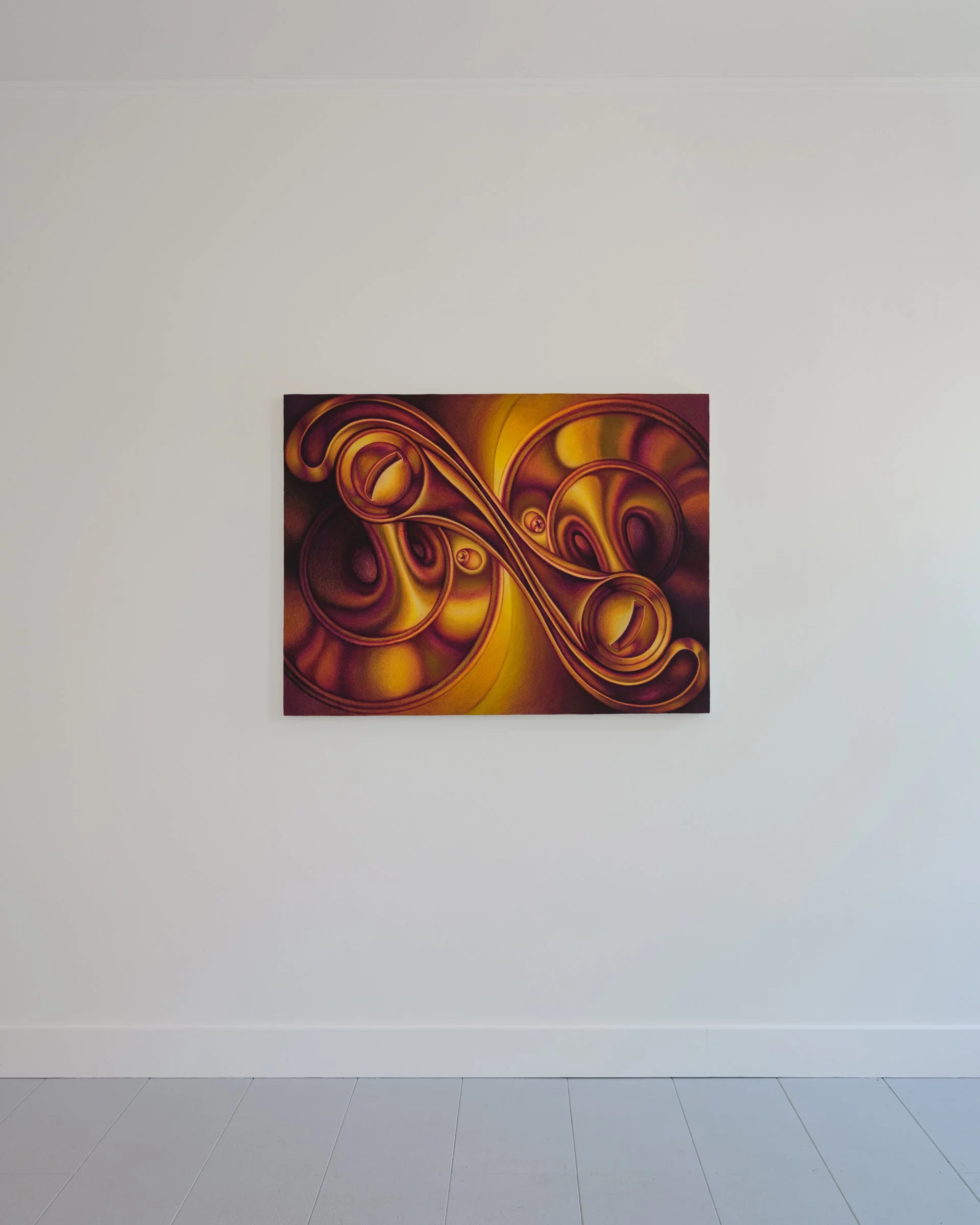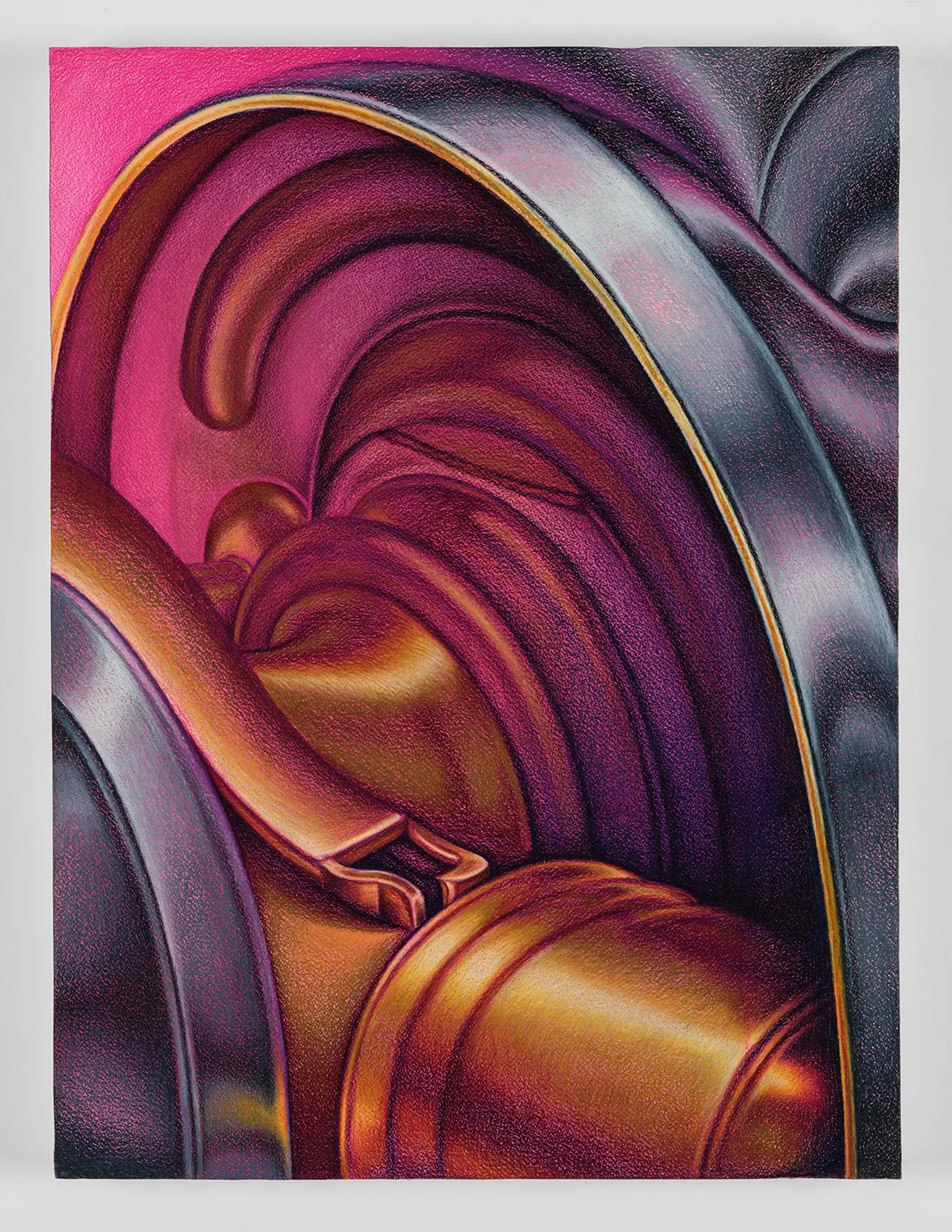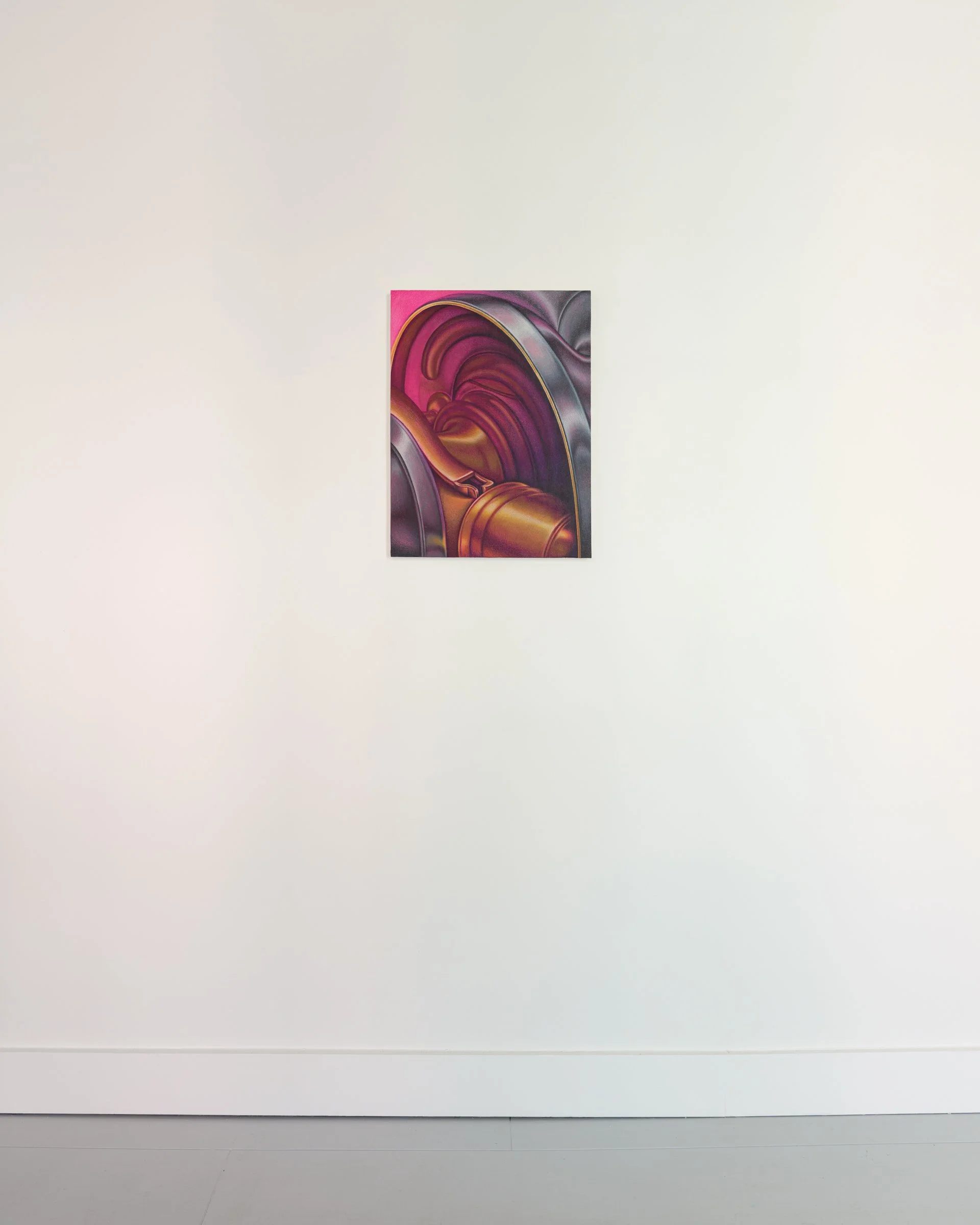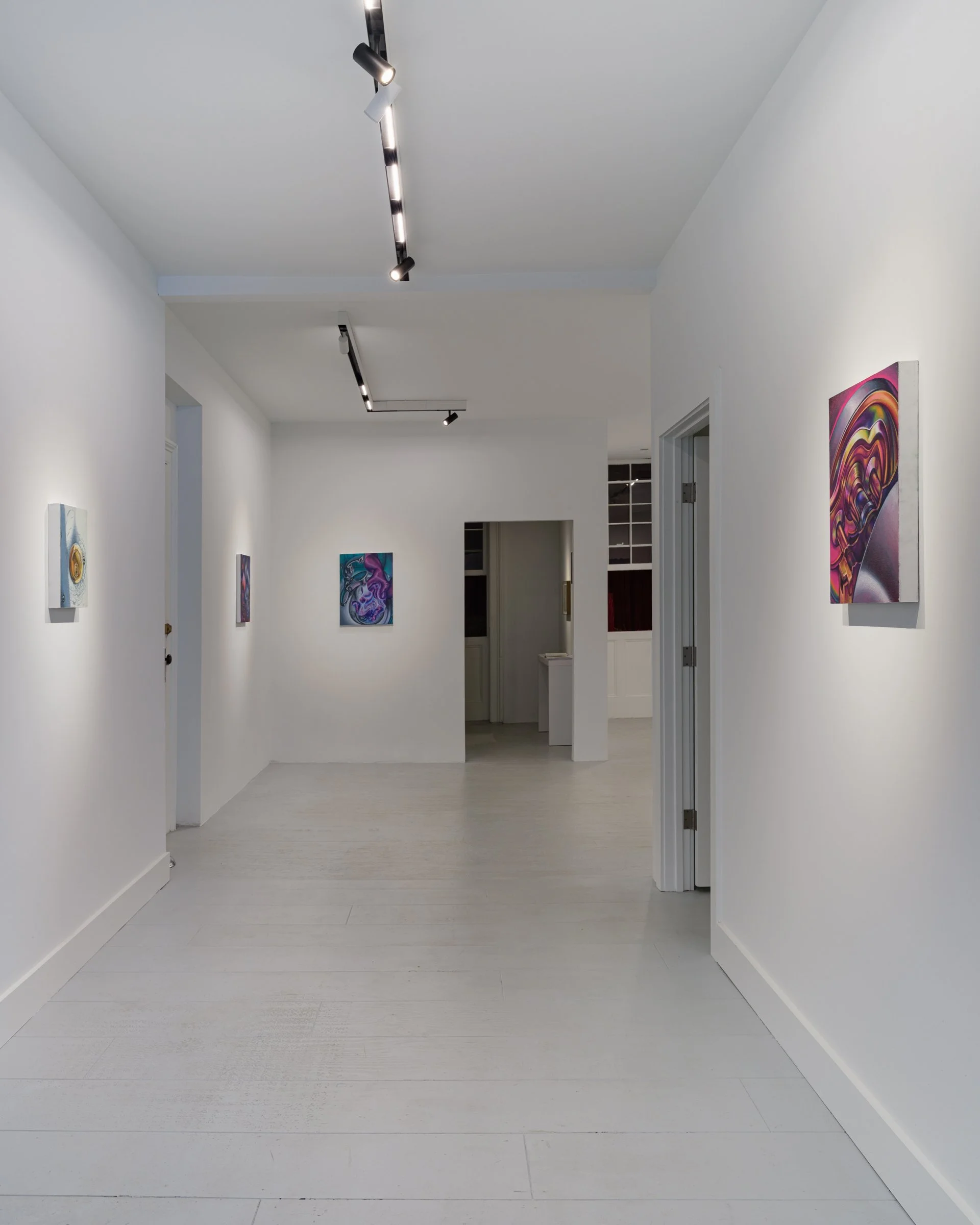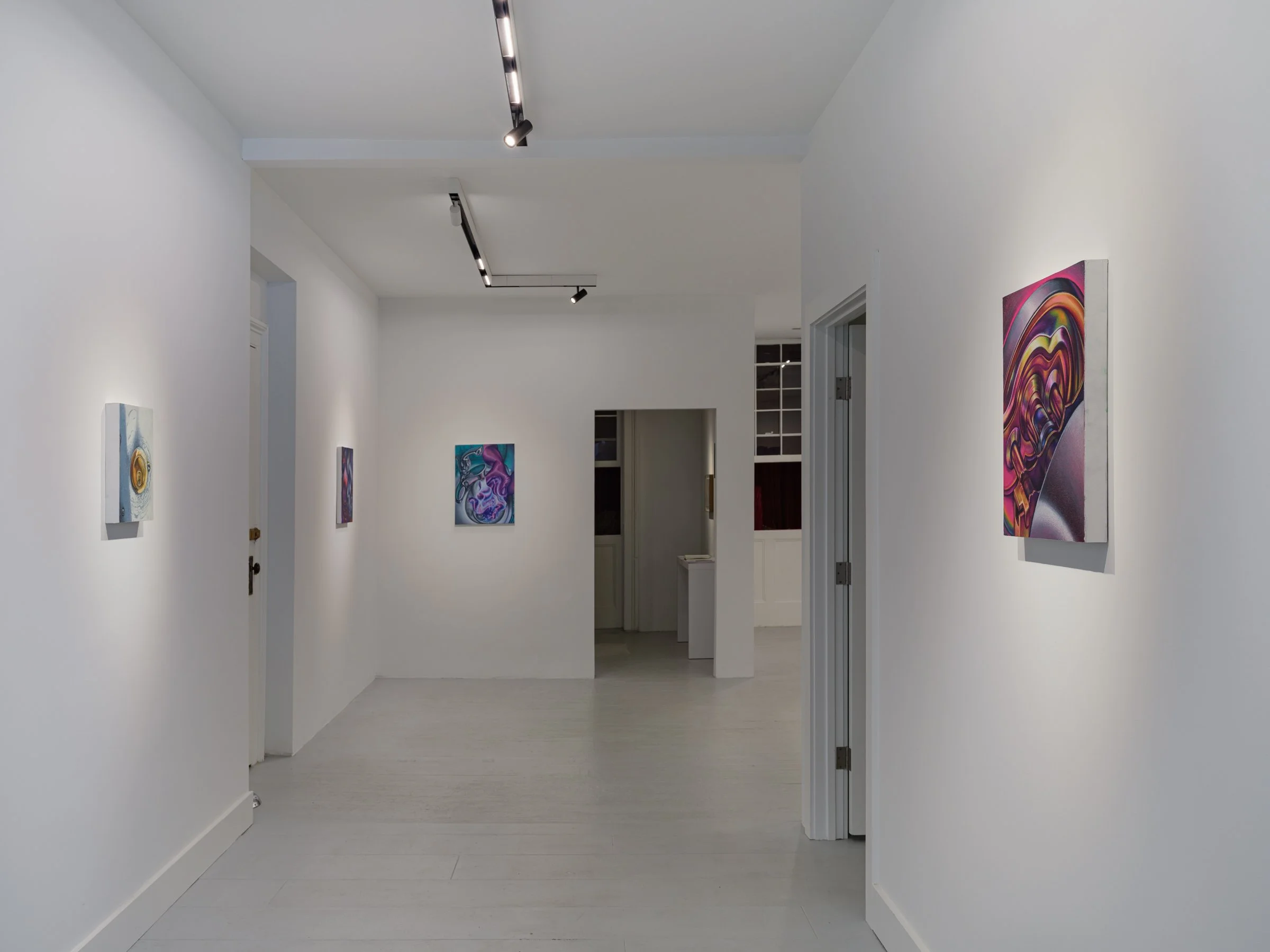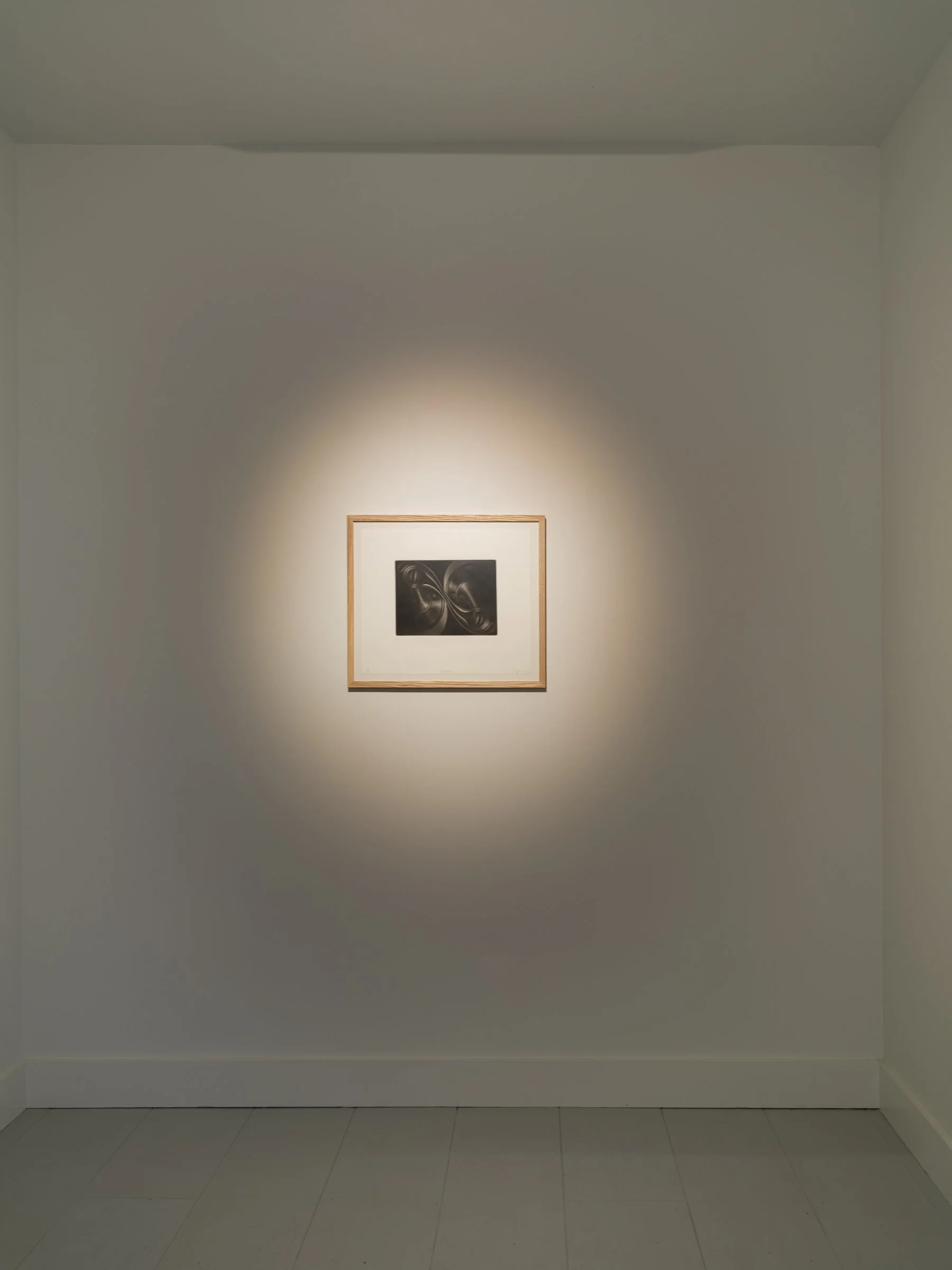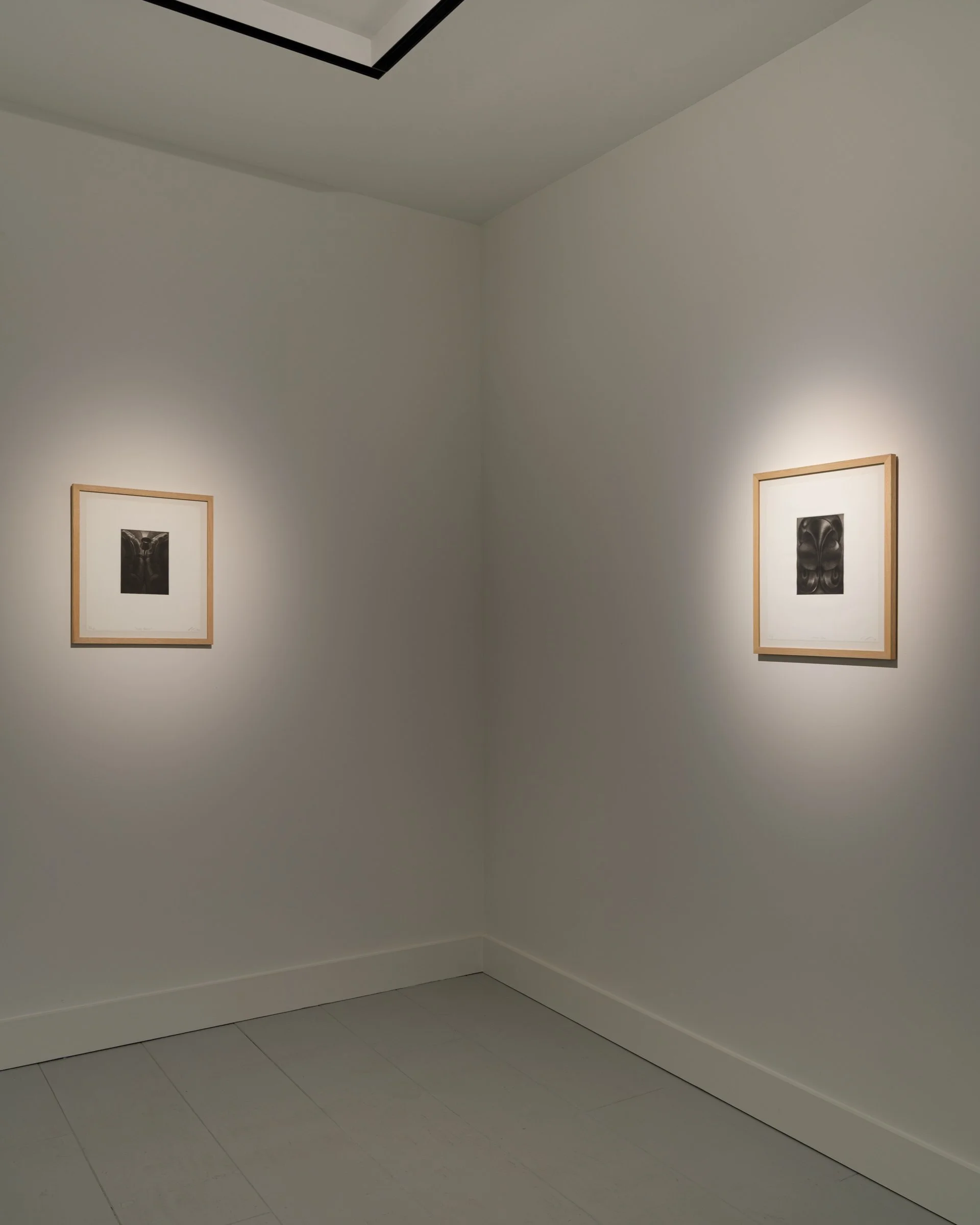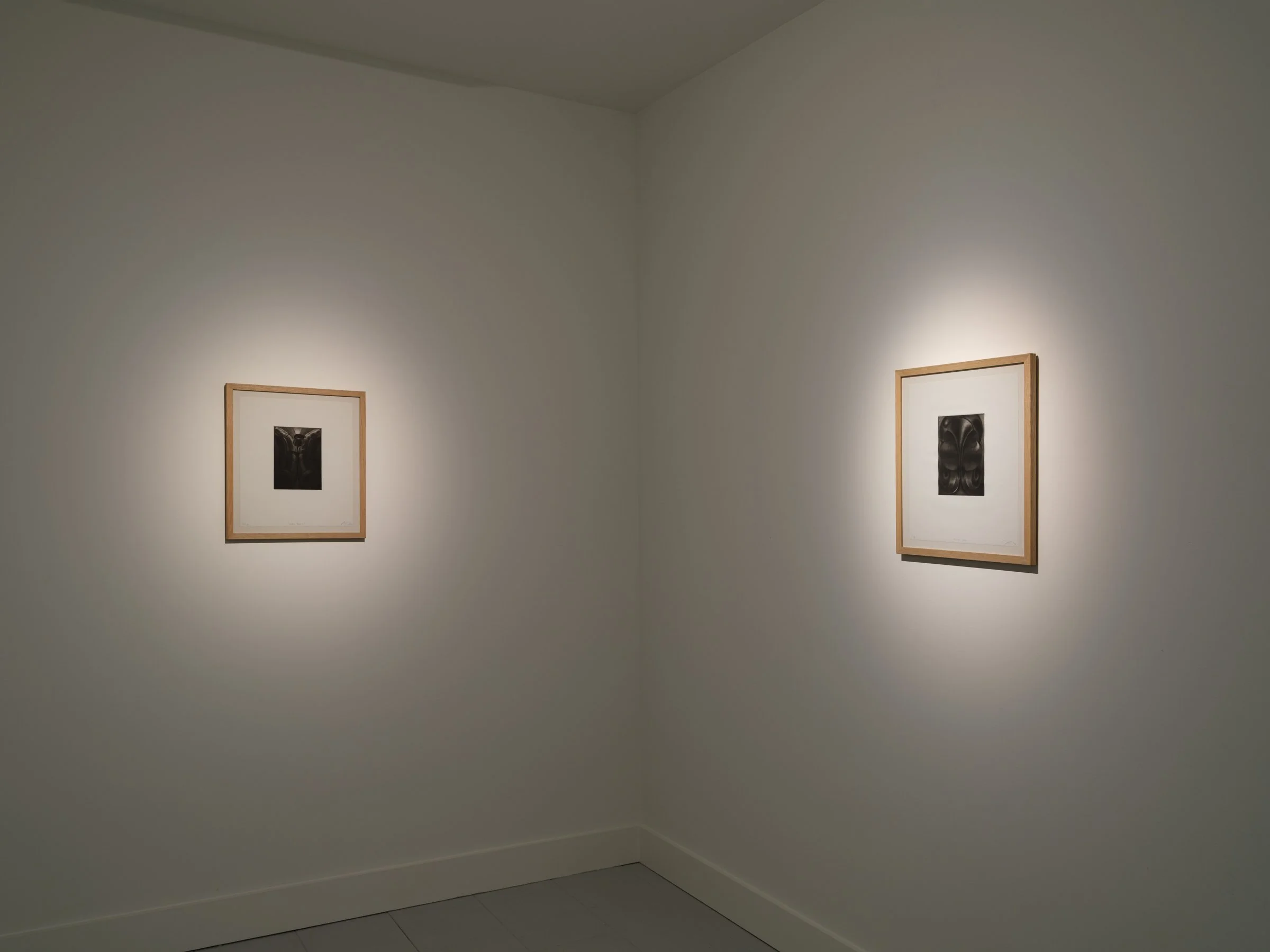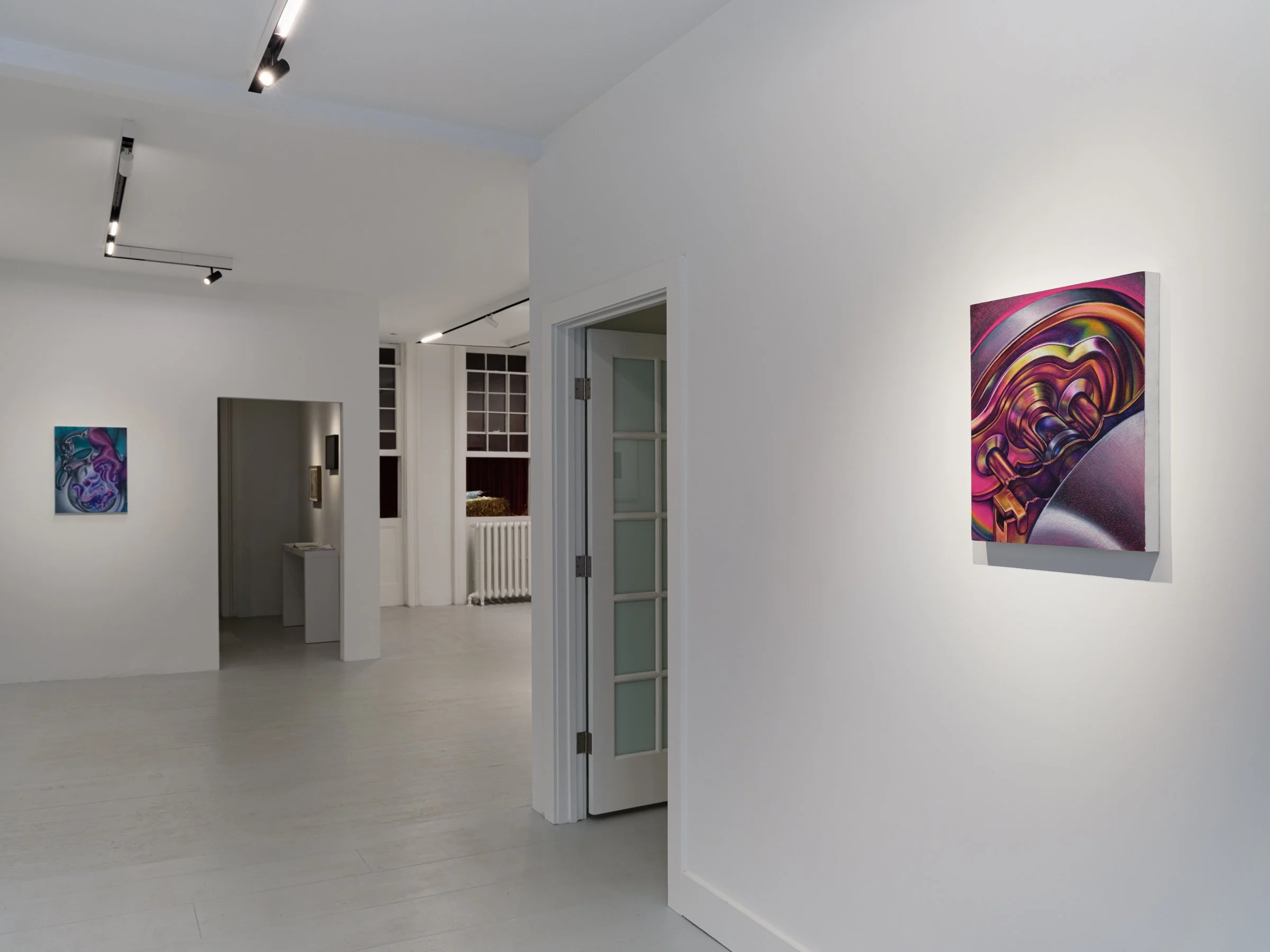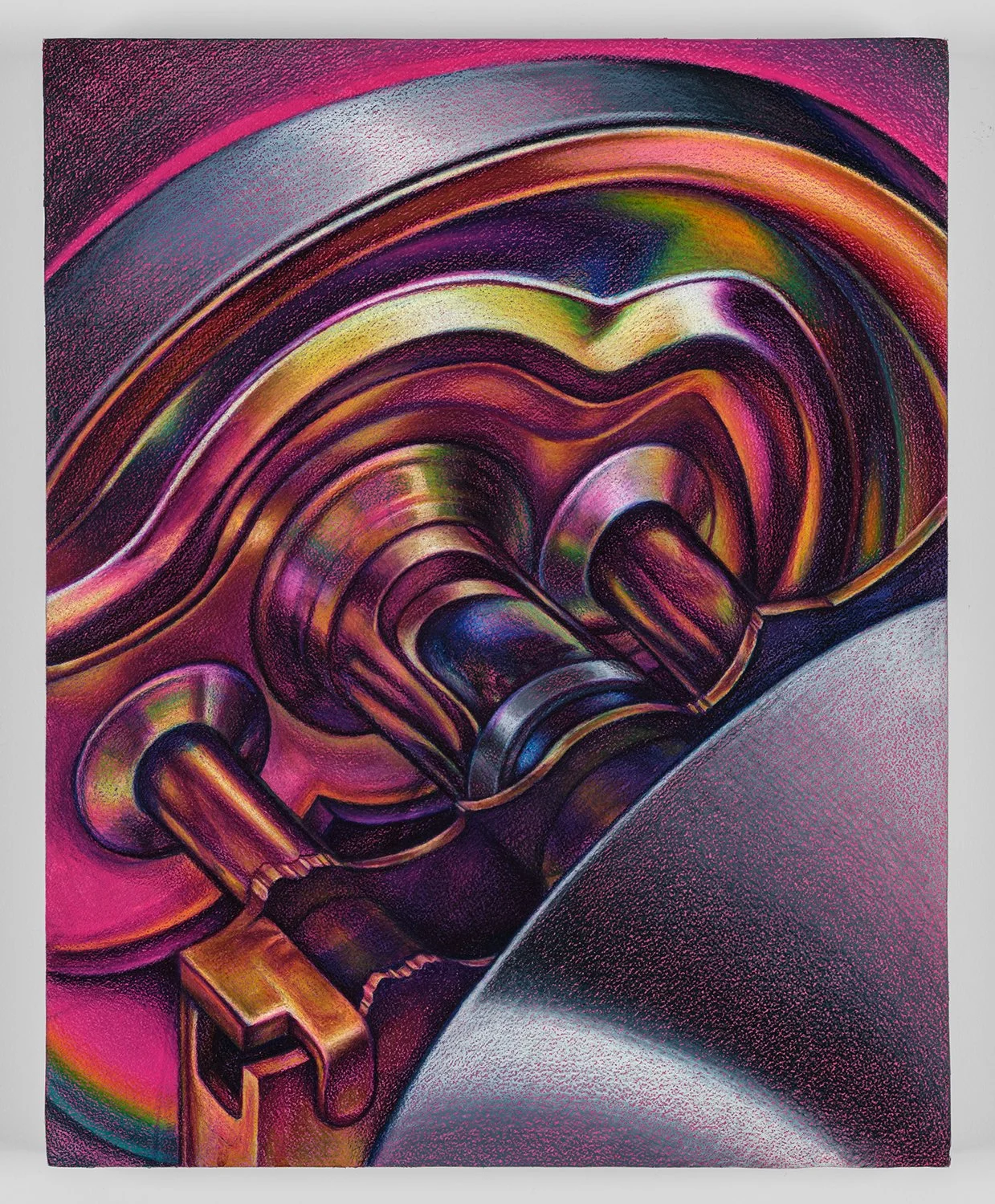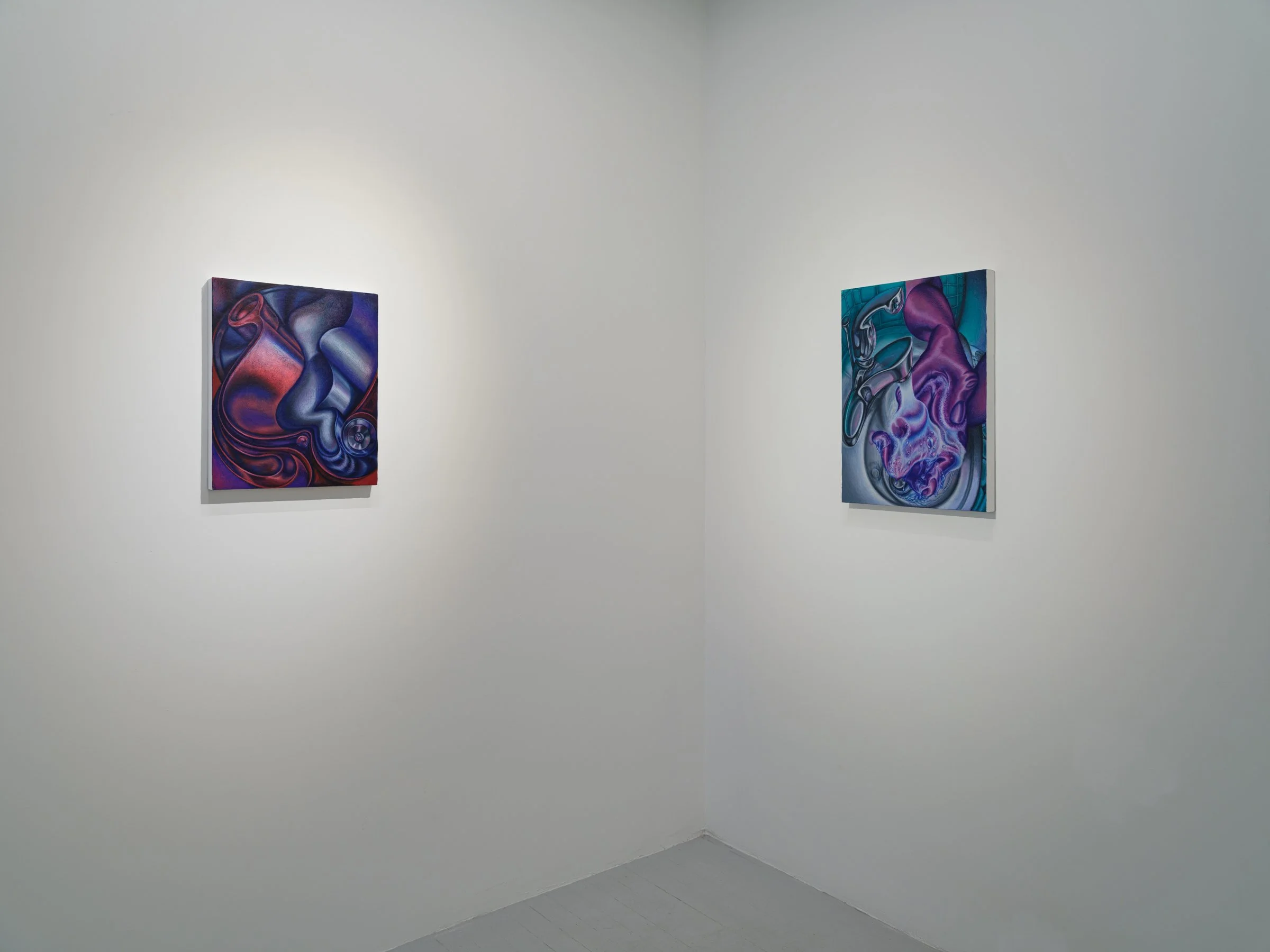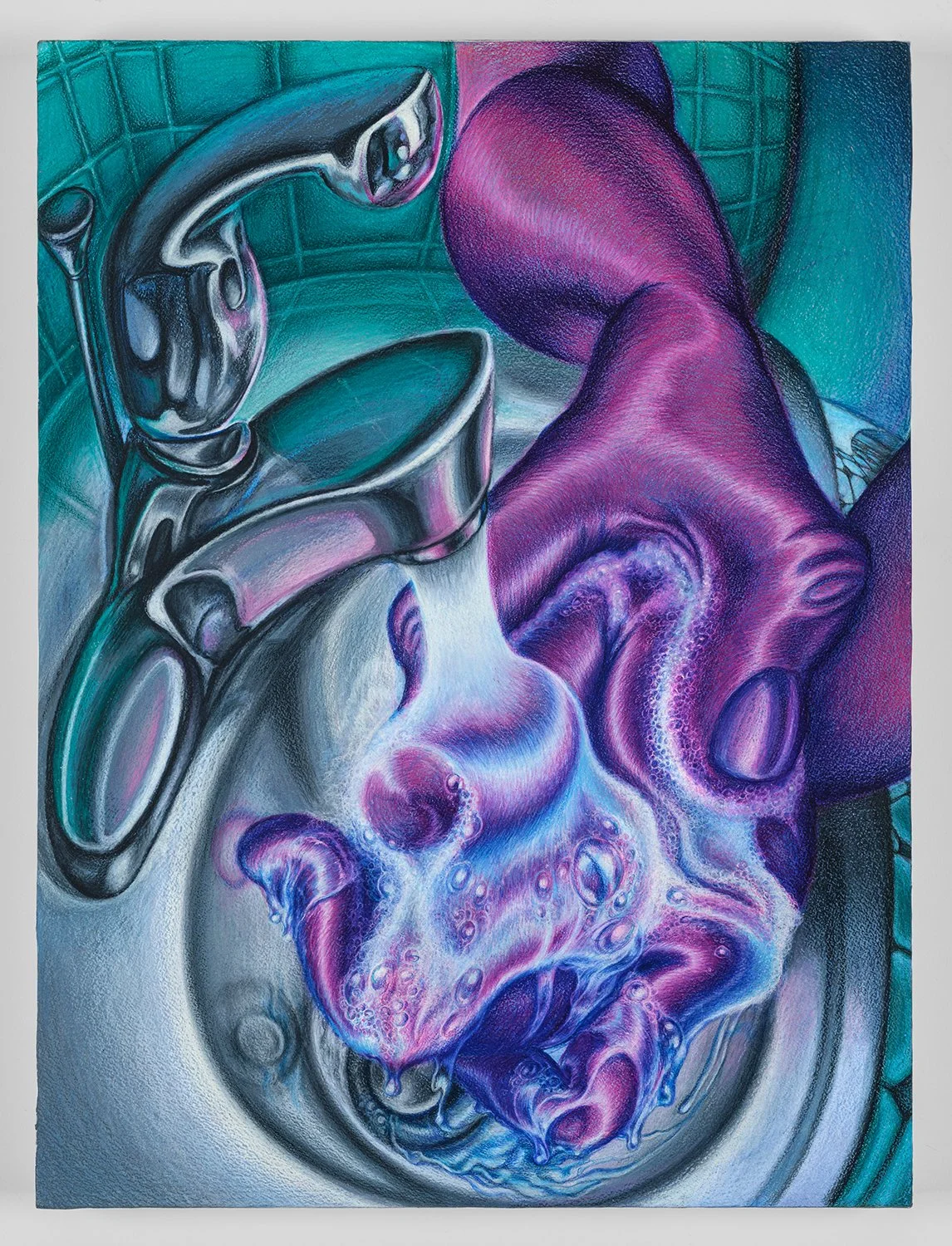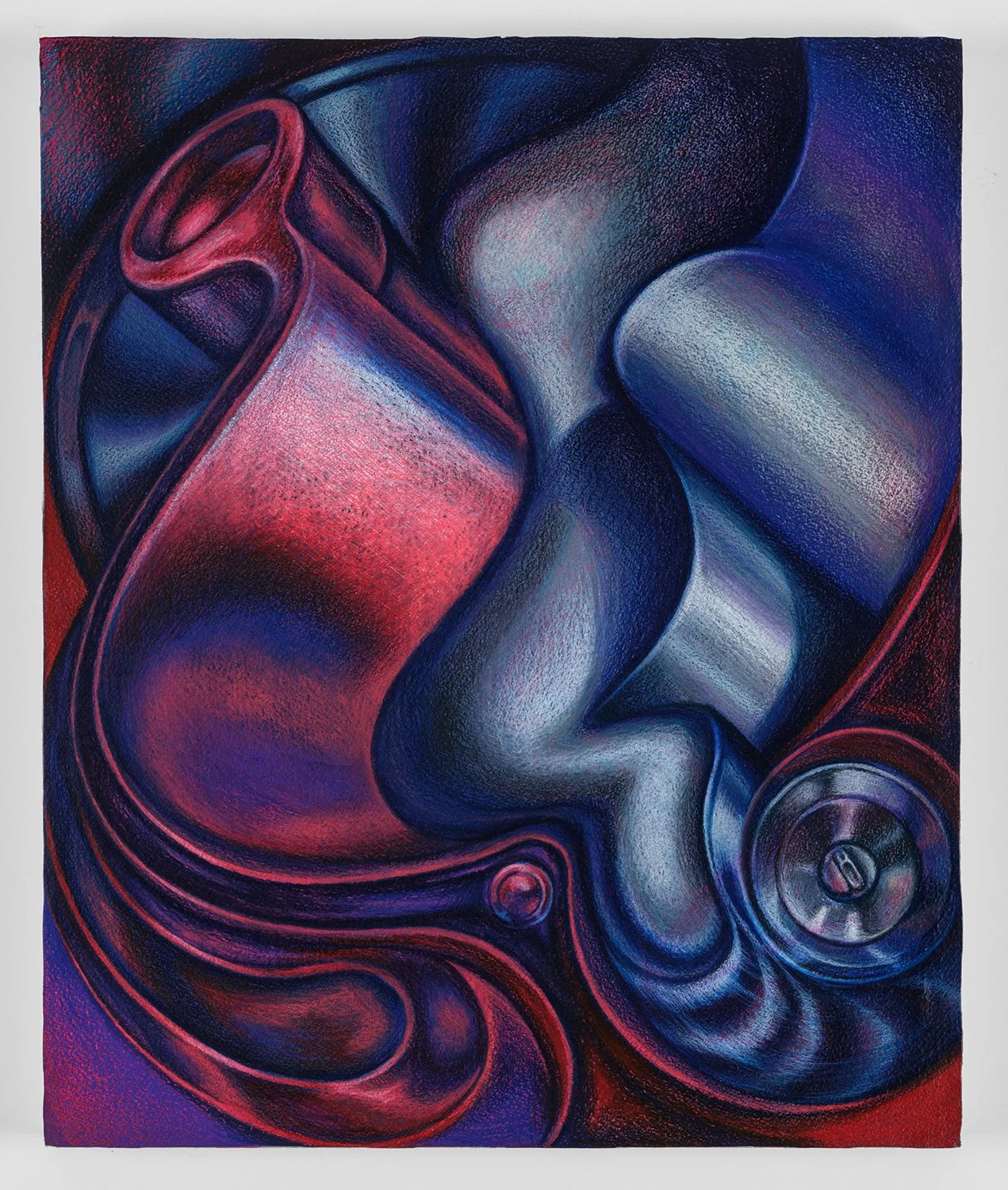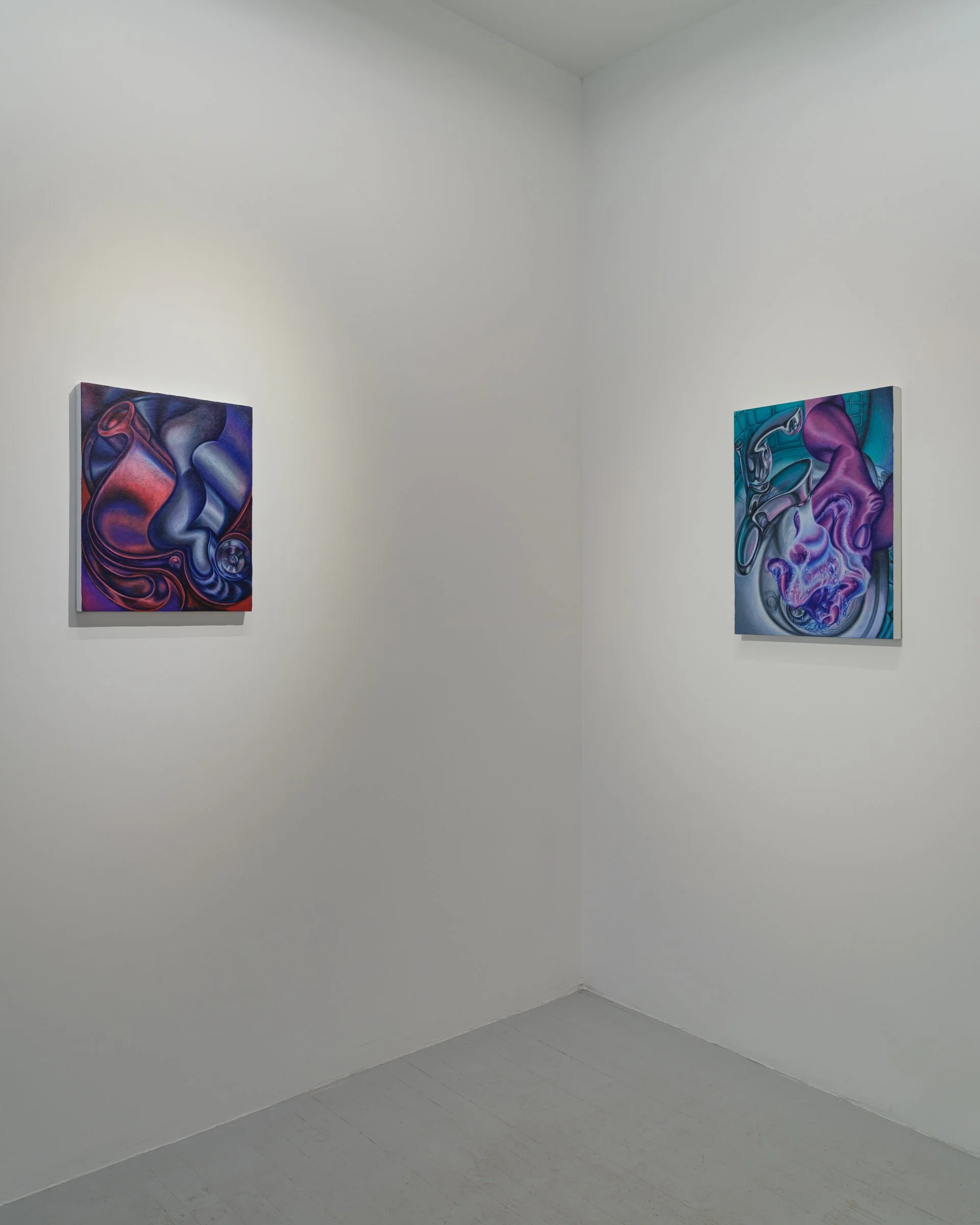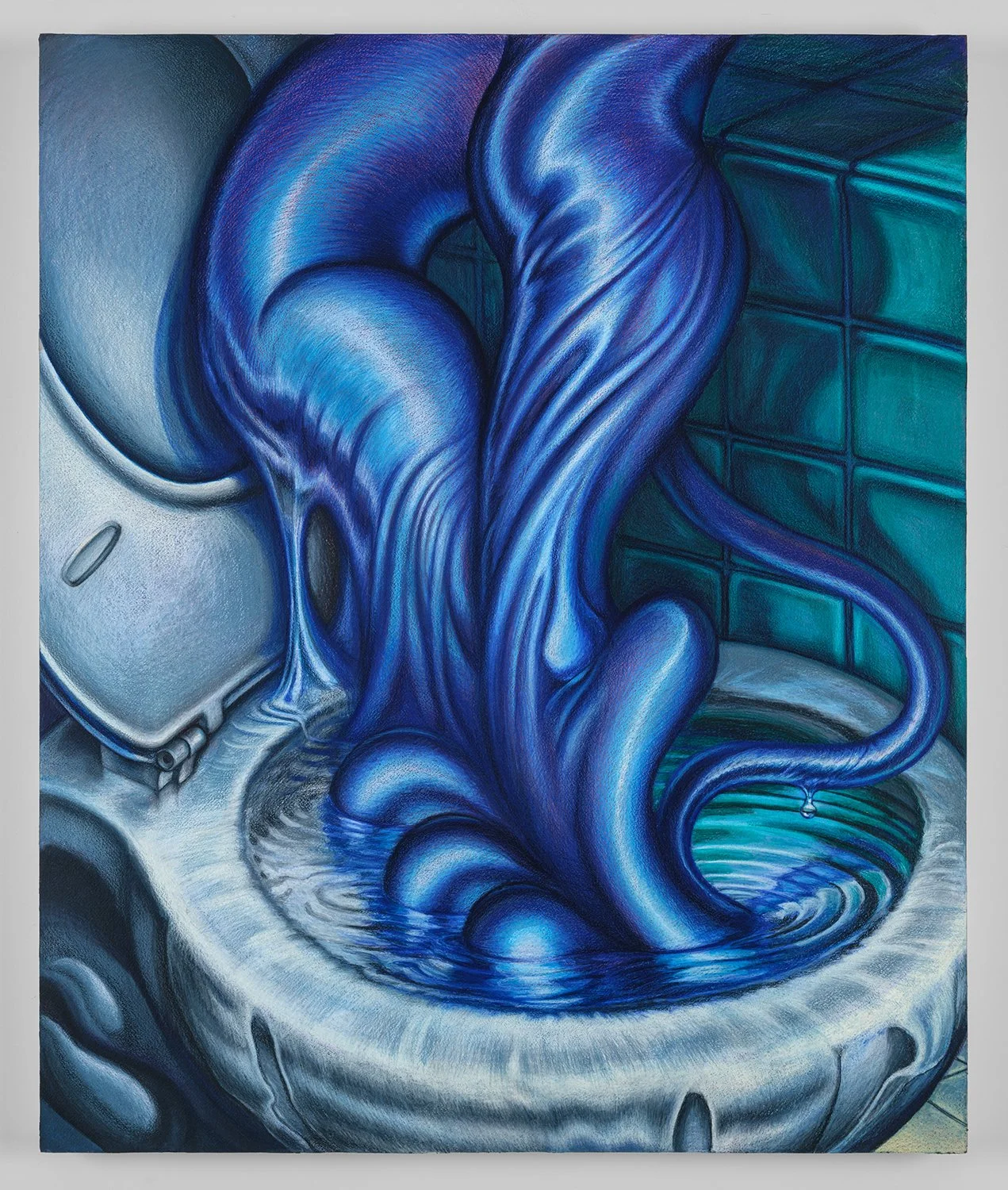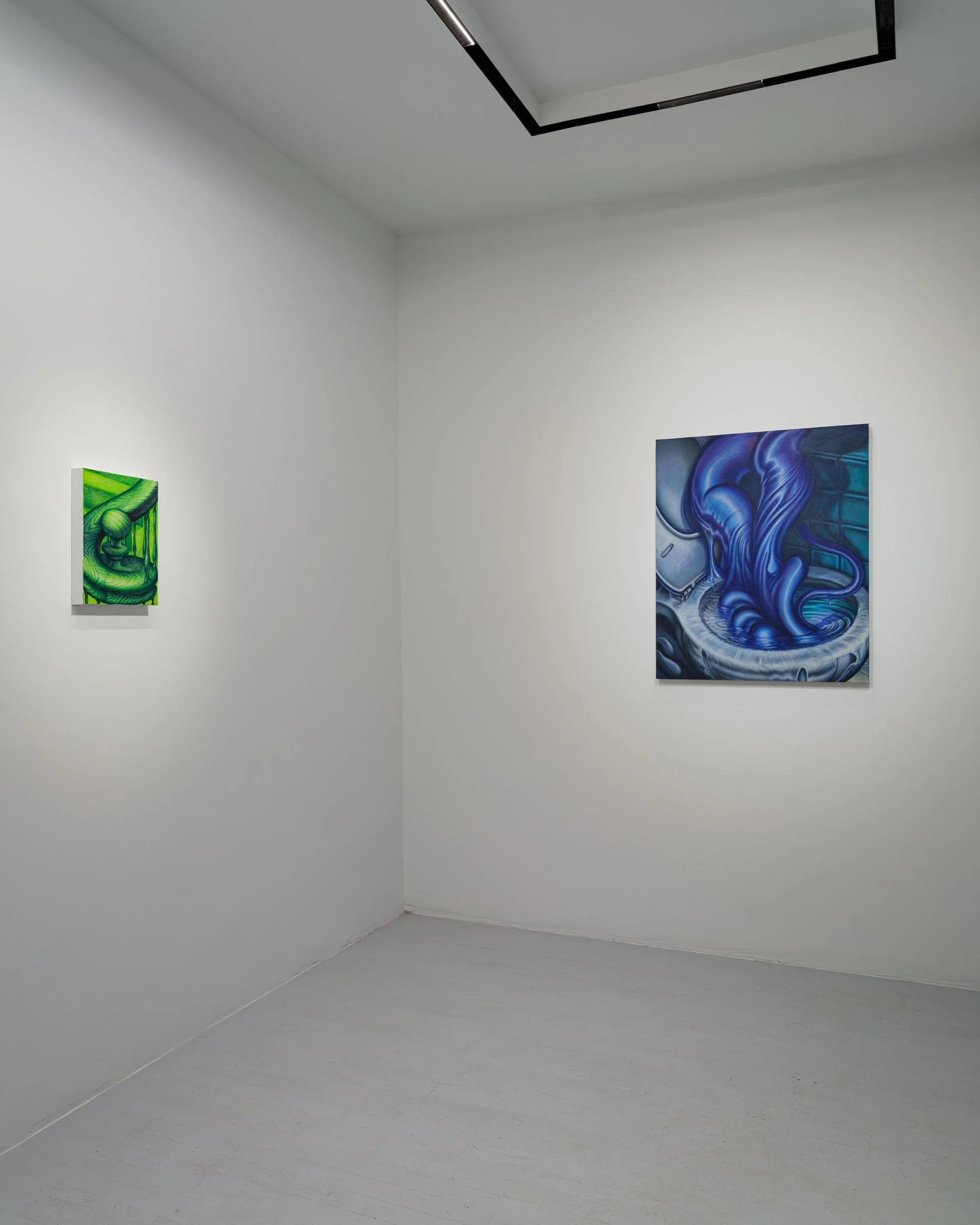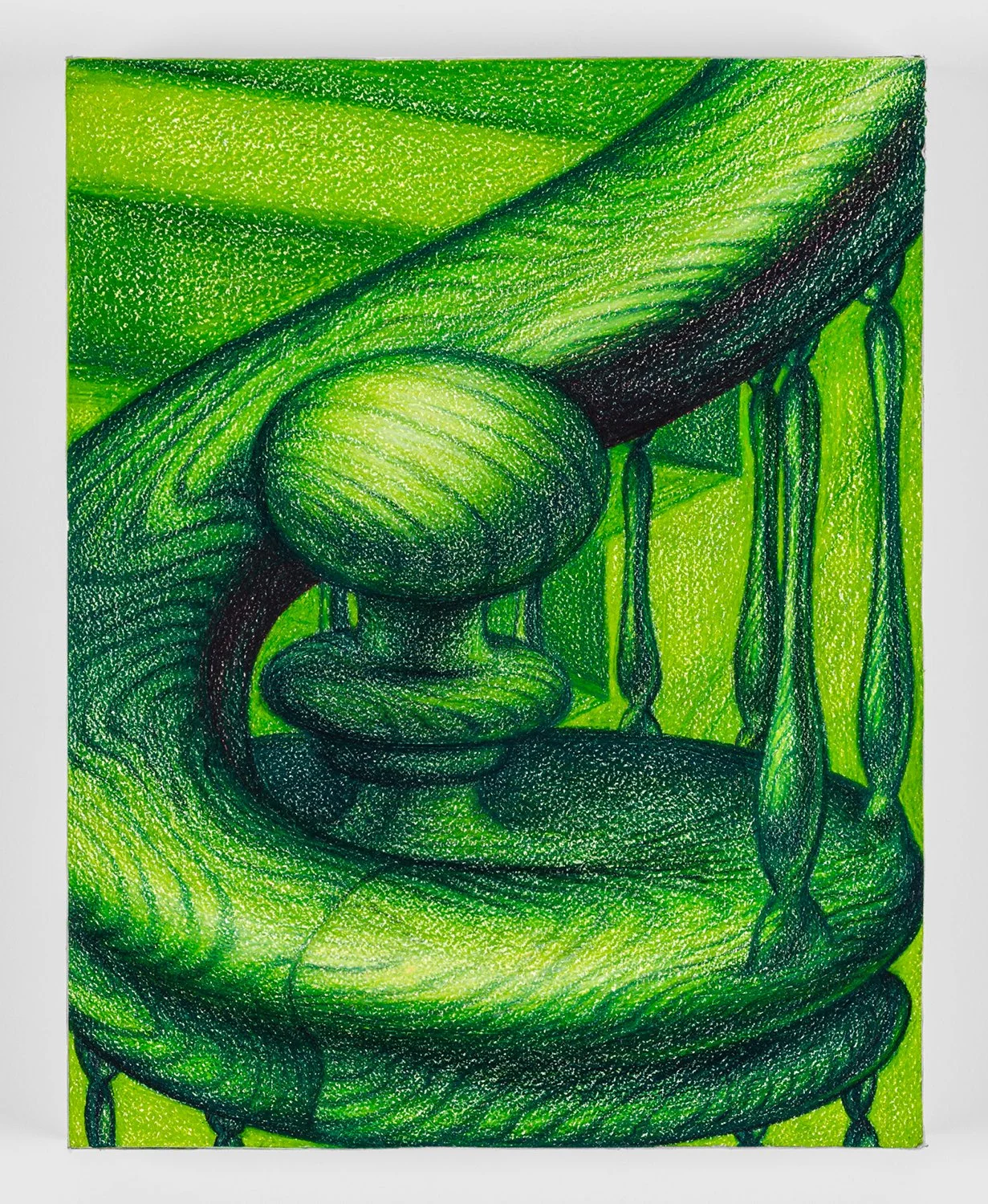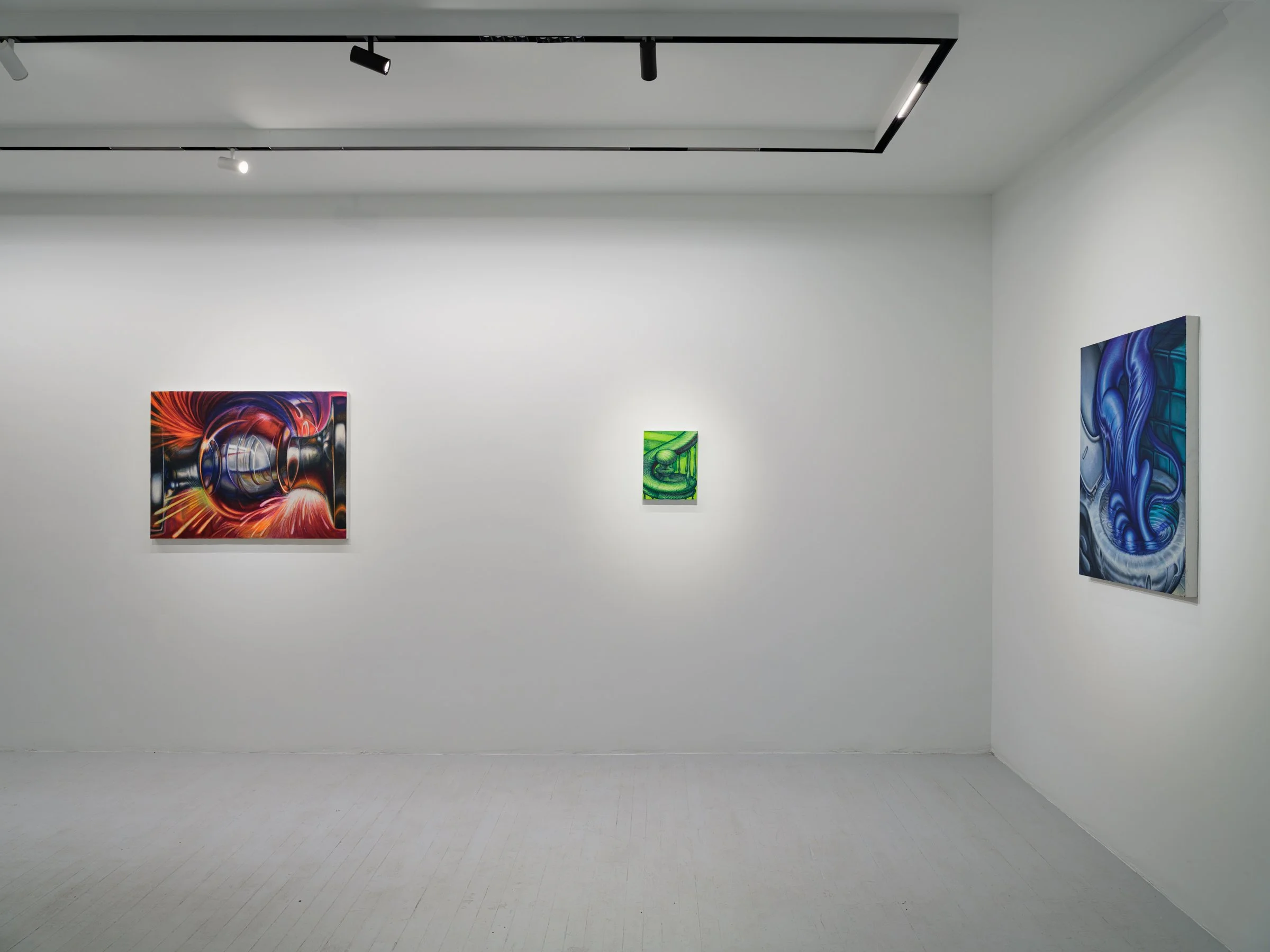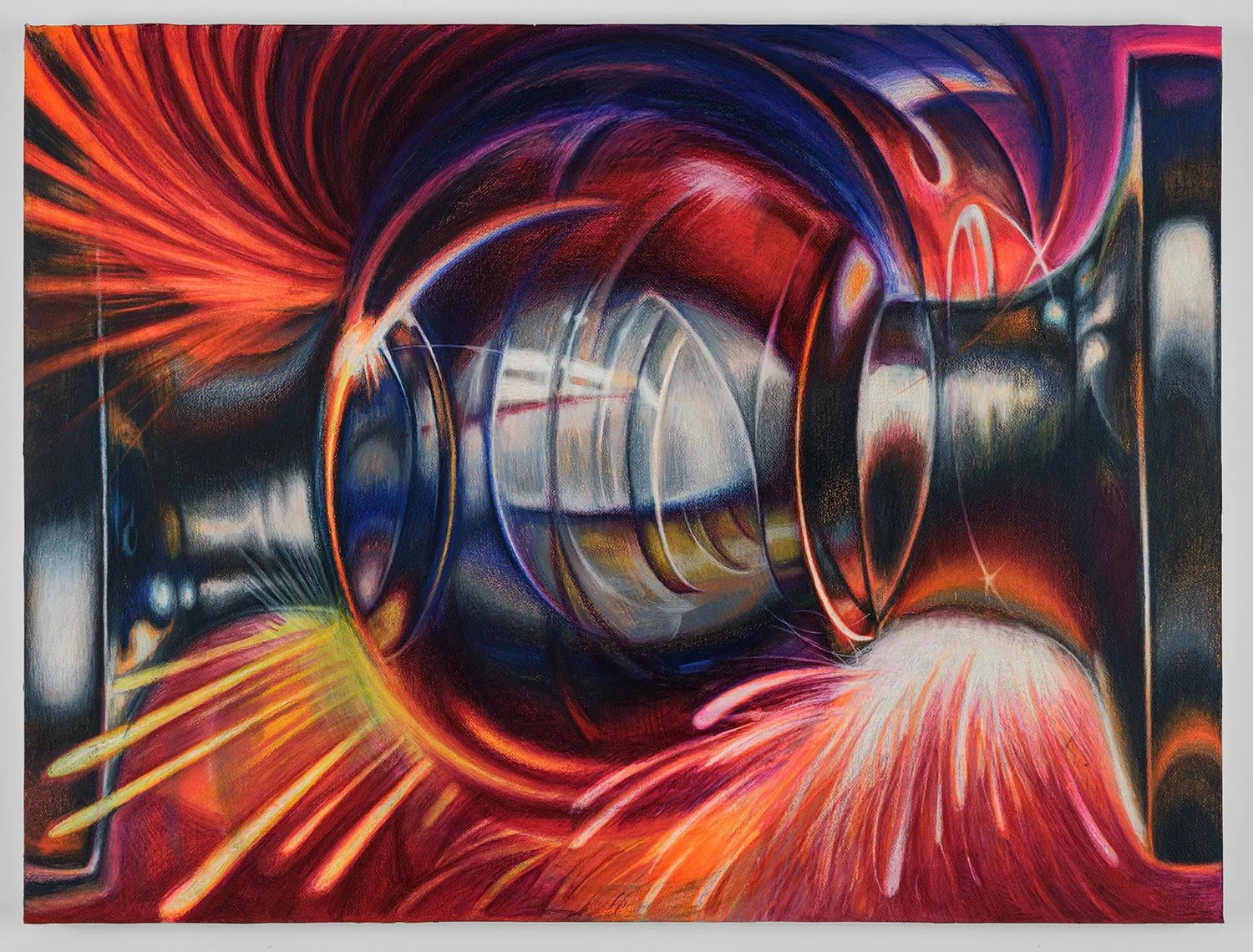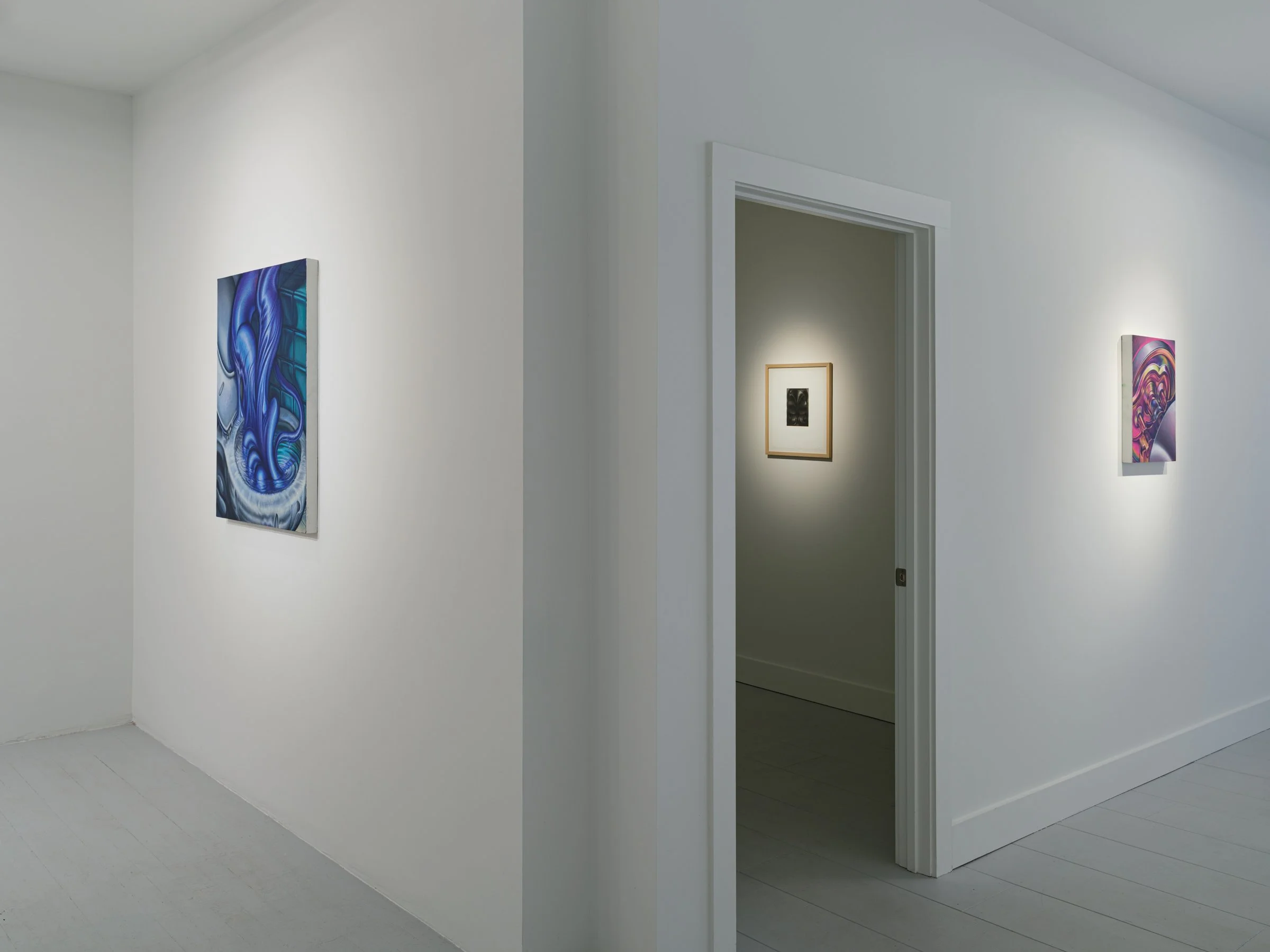Adam Linn
Fascinator
July 19–September 7, 2025
Opening reception Saturday, July 19, 2025, 3–5 PM
On first glance, Adam Linn’s extraordinary paintings afford luminous close-ups of things we often lose sight of due to their ordinariness: keyholes, doorknobs, high-heeled shoes, toilet seats, and runny sinks. But in Fascinator, each artwork meditates on the dynamism inherent in seemingly static things, things captured as if undergoing changes that Linn’s pencil and brush work manifest into view. In his works, newly energized phenomena emerge, hallucinatorily adored by Linn’s eye and hand and vibrating with an animacy somewhere between persons and things. Bereft of their stark utility and functionality in the world, they now brim with color, fluidity, elasticity and, of course, sex. Linn’s compositions are thus about things that cruise us by surprise, as opposed to lying in wait for spectators to find them. Indeed, his images petition to be felt, seen, and caressed; they thrust up and at viewers as unknown and unanticipated solicitations, originating out of an imaginary (and erotic) nothingness.
Linn’s compositions have various aesthetic fellow travelers. For example, they subtly reference the world of Wanda Gág, where objects and their environments take on cartoonishly exaggerated powers. But they also signal the detailed reverence of Domenico Gnoli’s paintings, where a button or a hairline is lavished attention as if to bring out a point of contemplation. In other instances, something of Deborah Remington’s hard edged dark saturations flood Linn’s work, such as in “Vivid Sud” where an overflowing faucet radiates out thick, lavender spillages that transform into amorphous shapes dwarfing the bathroom sink. This work is an example of how Linn thinks about issues of materiality: what counts as fluid and hard, soft or dense in a painting? Water can be as thing-like as a faucet, just as a color or a line can be an erect entity of its own. In “Fixations,” which is an interpretation of the mezzotint entitled “Cuddlers,” Linn depicts two shining door handles that cradle each other with a glowing liquid richness, as if transmuting them out of static objecthood and into colored, wet force. While these are things that exist in the world, Linn suggests that by looking more closely, different forms and energies appear out of these everyday objects. Indeed, it is this which makes them particularly queer in Linn’s aesthetic: out of place in defined normative spaces, Linn rearranges the environments from another point of view. Subtly reminiscent of Félix González-Torres’ “Untitled (Perfect Lovers),” which shows two identical clocks mounted side by side, at once doubling but also different from each other, “Fixations” pays homage to the (homo)sameness of these objects while also exploding their identities by giving “a special peek inside of something” (Linn), turning them inside out. In “Docking Procedure,” the doorknobs return but are this time positioned athwart each other, their color and shape pulled over or literally docked over the other as if in a shared, sexy embrace. And in “Metalmouth,” the interior fascinator of the handle mechanism sneakily suggests a sexy detail of inner stimulation, connection, and detachment.
Throughout the paintings in Fascinator, there is no interiority or inner life; everything is beautifully external, inhuman, and lusciously material. It fascinates. And if the titles of Linn’s paintings often hint at human intimacies, what he is really after is an intimacy between things and for things. In other words: these are not things interpersonally made for us to hold and use, but rather things existing and mingling with each other—an anonymous tenderness of things that have no need for us, but are also a part of this world. Linn’s works powerfully reflect on how to begin tilting our view to see otherwise.
—Jacques Khalip
Press for Fascinator
Adam Linn, Metalmouth, 2025, colored pencil, acrylic gouache and watercolor on paper mounted panel, 24 x 18 inches
Adam Linn
Adam Linn’s practice contorts animate realities steeped in seduction. Using a voluptuous visual language, he works across drawing, painting and printmaking to probe relationships between sexuality, power, gender, desire and representation. Exaggerated perspectives pulse and undulate, thrusting themselves at the viewer in assertion. Within these compositions he animates entities of an almost banal level of familiarity, from hardware and appliances to body parts in flux. These subjects are a crossbreeding of the everyday with the weird and vulgar pockets of our deepest imaginations. Linn’s world-building imagines a viewpoint where all things breathe. In this state of coexisting contradictions, things that should be rigid appear elastic, smooth surfaces are textured in static, and compositions bend and droop like warm taffy. These images push outward to the edge of the frame, swelling toward the viewer while sloping along the borders. In these curvilinear networks are legible details tangling with abstraction. Dramatic lighting, hypersaturated color and the use of chiaroscuro sculpt these forms in vignettes of continuous flow. This accentuated language reinterprets non-human entities through a language of erotic representation. Linn imagines sexuality as a force that is felt rather than explicitly seen and something that consistently evades definition. Queerness exists with a turvy logic where figures and spaces exist on the brink of recognition. The very idea of straightness rolls in on itself, curling up like a spring waiting to explode.
Adam Linn, Always Right, 2025, colored pencil, acrylic gouache and watercolor on paper mounted pane, 16 x 12 x 1.5 inches
ADAM LINN (b. 1995 Pittsburgh, PA) received a BFA in Printmaking from the Rhode Island School of Design in 2017 and an MFA in Visual Arts from SUNY Purchase in 2024. Linn has exhibited in New York, NY, Los Angeles, CA, Purchase, NY, Troy, NY, Montpelier, VT, Pittsburgh, PA, Greensburg, PA, Austin TX, Berlin, DE, Barcelona, ES, Tokyo, JP Central, HK, Shanghai, CN and London, EN. He has participated in residencies at Vermont Studio Center (Johnson, VT), Anderson Ranch Arts Center (Snowmass Village, CO) Brewhouse Association (Pittsburgh, PA), The Macedonia Institute (Chatham, NY), Millay Arts (Austerlitz, NY) Robert Blackburn Printshop (New York, NY) and the Manhattan Graphics Center (Brooklyn, NY). He currently lives and works in Brooklyn, NY.
Installation photography by Spencer House Studio

